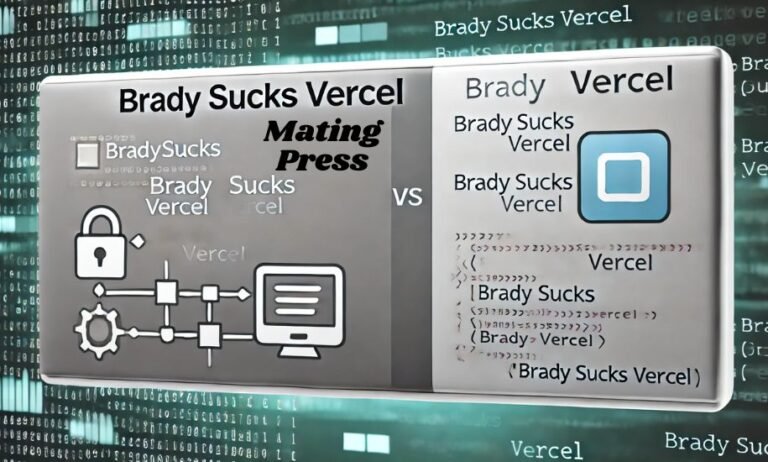Navigating the internet can sometimes feel like wandering through a maze. One moment, you’re cruising smoothly; the next, you hit a wall marked “406 Error.” This frustrating message can leave both website owners and visitors scratching their heads. What does it mean? Why is it happening? More importantly, how do you fix it?
If you’ve stumbled upon this error while trying to access content or maintain your site, you’re not alone. Many website administrators encounter this issue at some point. But don’t worry—understanding the 406 error is the first step towards resolving it and ensuring that your online presence remains robust and user-friendly.
Let’s dive into what causes this pesky problem and explore practical solutions so you can get back on track without missing a beat!
Understanding the 406 Error
The 406 error is an HTTP status code that indicates a client’s request was not accepted by the server because it couldn’t provide a suitable response. Essentially, your browser is asking for something specific, and the server isn’t able to deliver it.
This issue often arises when there’s a mismatch between what the client accepts and what the server can offer. For example, if you’re requesting an image in one format but only have another available, you may encounter this error.
Users might see various messages associated with this code depending on their browser or website settings. Some common displays include “Not Acceptable” or simply “Error 406.”
Understanding this error helps pinpoint where things are going awry in communication between clients and servers. Knowing its implications can guide you through troubleshooting steps effectively.
Common Causes of a 406 Error
A 406 error often occurs when a web server cannot provide the requested content in an acceptable format. This mismatch typically stems from the client’s request headers, specifically the “Accept” header.
If your browser requests a file type that your server does not support, you might encounter this issue. For example, asking for JSON data while only HTML is available can trigger a 406 error message.
Another common cause involves misconfigured Content Negotiation settings on your server. If these configurations are set incorrectly, they may lead to unexpected results when serving different types of files.
Sometimes third-party plugins or themes may also influence how data is delivered from your site. If they’re not compatible with current standards or other components, this could easily result in errors during user interactions.
Outdated software can exacerbate compatibility issues and increase the likelihood of encountering a 406 error across various devices.
Troubleshooting Steps for Fixing a 406 Error
When you encounter a 406 error, it’s essential to tackle the issue systematically. Start by checking your server logs. These logs provide insights into what might be causing the problem.
Next, take a look at your .htaccess file. Misconfigurations here can lead to compatibility issues with content negotiation, triggering that pesky error.
Clearing your browser cache is another crucial step. Sometimes outdated files and data can interfere with how resources are loaded and displayed.
Consider testing different browsers or devices as well. This helps determine whether the issue lies within specific settings or configurations on particular platforms.
If these steps don’t resolve the problem, further investigation may be necessary to identify more complex underlying causes affecting your website’s performance.
Preventing Future 406 Errors
To prevent future 406 errors, it’s essential to keep your website’s content in sync with server settings. Regularly review the accepted media types and formats on your server. Ensure that they align with what your web application supports.
Using appropriate headers is also vital. Ensure the `Accept` header sent by clients matches the data formats you’ve configured on the server. This helps avoid unnecessary conflicts.
Invest time in routine checks of your .htaccess file or configuration files for any misconfigurations that could lead to 406 responses. Keeping these files well-organized can save time when troubleshooting issues.
Implementing error monitoring tools will alert you immediately if a 406 error occurs again. Quick detection allows for swift resolution, keeping user experience seamless and uninterrupted.
Regular testing ensures everything runs smoothly, reducing potential disruptions caused by unsupported content types or formats down the line.
Importance of Regularly Checking for Website Errors
Regularly checking for website errors is crucial for maintaining a healthy online presence. Errors can disrupt user experience and lead to lost traffic. When visitors encounter issues, they often leave your site, impacting both engagement and conversions.
Search engines also take note of these errors. A website riddled with problems may struggle to rank well in search results. This means fewer potential customers discovering your services or products.
Frequent checks help you identify underlying issues before they escalate. It’s not just about fixing what’s broken; it’s about optimizing performance as well. Regular maintenance keeps your site running smoothly and efficiently.
Furthermore, being proactive demonstrates professionalism and reliability to your audience. Users are more likely to trust a website that functions seamlessly over one filled with glitches or error messages. Investing time into regular error checks pays off significantly in the long run.
Seeking Professional Help
Sometimes, troubleshooting a 406 error can feel overwhelming. If you’ve tried various methods without success, it might be time to consider professional help.
Web developers and IT professionals have the expertise needed to diagnose complex issues that may not be immediately visible. They understand server configurations and application settings in ways that can make a significant difference.
Hiring an expert saves you time and frustration. Plus, they can implement long-term solutions that prevent future errors from cropping up again.
It’s also worth noting that some hosting providers offer support services specifically for these kinds of problems. Reaching out could lead to faster resolutions than going it alone.
Investing in professional assistance often leads to a more stable website overall. It’s about ensuring your site runs smoothly while you focus on what matters most—your content and audience engagement.
Steps to Fixing a 406 Error
When tackling a 406 error, start by checking your server logs. This step helps identify what goes wrong during requests. Look for any unusual entries that might point to the issue.
Next, review your .htaccess file. Misconfigurations here can trigger errors like this one. Ensure that the directives are set correctly and don’t conflict with each other.
Clearing your browser cache is also crucial. Sometimes old cached data causes problems in rendering content properly. A quick refresh often resolves these issues.
If you still face challenges after these steps, consider looking into advanced troubleshooting techniques or reach out for professional assistance if needed.
A. Check Your Server Logs
Checking your server logs is a crucial first step when tackling a 406 error. These logs provide insight into what happens behind the scenes when users try to access your site.
Start by locating the log files on your server. Typically, they can be found in the web root directory or a designated logs folder. If you’re using shared hosting, consult your hosting provider’s documentation for specifics.
Once you’ve accessed them, look for any entries that coincide with the occurrence of the 406 error. This might include specific requests that triggered the issue or notes about content negotiation failures.
Pay attention to any unusual patterns or frequent occurrences related to certain URLs. Identifying these trends can help pinpoint misconfigurations or unsupported media types that could be causing problems for visitors trying to access your website.
B. Review Your .htaccess File
The .htaccess file plays a crucial role in how your server interacts with incoming requests. This configuration file can dictate everything from URL redirects to access control.
When troubleshooting a 406 error, reviewing this file is essential. A misconfiguration might restrict the types of files that can be served or block certain user agents.
Open the .htaccess file and look for any directives related to content negotiation or HTTP headers. These settings could inadvertently cause issues by limiting acceptable formats for responses.
Make sure there are no conflicting rules that might prevent your site from delivering the correct content type. Remove or comment out suspicious entries temporarily to see if it resolves the issue.
Always back up your original .htaccess before making changes. That way, you can easily revert if something goes wrong during your adjustments.
C. Clear Your Browser Cache
Clearing your browser cache is a simple yet effective step in resolving a 406 error. Cached data can sometimes cause conflicts with the server, leading to unexpected issues.
Start by navigating to your browser settings. Most browsers have an option labeled “Privacy” or “History.” Here, you’ll find the option to clear browsing data.
Make sure to select only cached images and files if you don’t want to lose other saved information like passwords and form data. This keeps your important details intact while refreshing outdated resources.
After clearing the cache, restart your browser. Then revisit the page that showed the 406 error. If all goes well, this straightforward action might just resolve your issue without any further troubleshooting needed.
Keeping your cache clear regularly can improve overall performance too, making it easier for pages to load correctly.
Advanced Troubleshooting Techniques
When basic troubleshooting doesn’t resolve the 406 error, advanced techniques can save the day. Start by inspecting the server configuration files, like Nginx or Apache settings. Misconfigurations here often lead to content negotiation issues.
Next, enable detailed logging for your web server. This provides deeper insights into requests and responses that might be causing conflicts. Look for patterns in these logs that correlate with user access problems.
You might also consider testing different browsers or devices to see if the issue is consistent across platforms. Sometimes a specific setup causes unexpected behavior.
Use online tools to validate your headers and diagnose potential miscommunication between client and server. These tools can reveal discrepancies you may have overlooked during initial checks.
When to Seek Professional Help
If the 406 error persists despite your troubleshooting efforts, it may be time to seek professional help. Sometimes, underlying issues require expertise beyond basic fixes.
Consider reaching out when you notice frequent occurrences of the error across different pages. This could indicate a deeper configuration problem within your server or application settings.
Another sign is if you’re unsure about modifying files like .htaccess. Incorrect changes can lead to more significant issues that might disrupt your website’s functionality further.
If you lack the technical skills or resources to investigate server logs effectively, consulting an expert can save you time and frustration. They have tools and knowledge that can quickly identify problems hidden from plain sight.
Professional assistance also becomes crucial if downtime affects your business revenue or reputation significantly. A timely intervention can minimize losses and restore normalcy faster than trying to fix it on your own.
Conclusion
Dealing with a 406 error can be frustrating, especially when it disrupts user experience on your website. Understanding the nature of this error is essential for troubleshooting effectively. By identifying common causes and following systematic steps to diagnose the issue, you can often resolve it without too much hassle.
Regular maintenance and checks are crucial to prevent these errors from recurring. Keeping an eye on server logs and .htaccess configurations will help catch potential issues before they escalate. Additionally, clearing your browser cache should become part of your routine whenever you encounter discrepancies in site performance.
For complex problems or persistent errors that defy easy solutions, seeking professional assistance may save time and avoid further complications down the road. Remember that a well-functioning website not only improves user satisfaction but also enhances SEO performance.
Staying proactive about checking for errors like the 406 error ensures that your site runs smoothly for all visitors. Investing effort into maintaining your online presence pays off in reliability and user trust.







